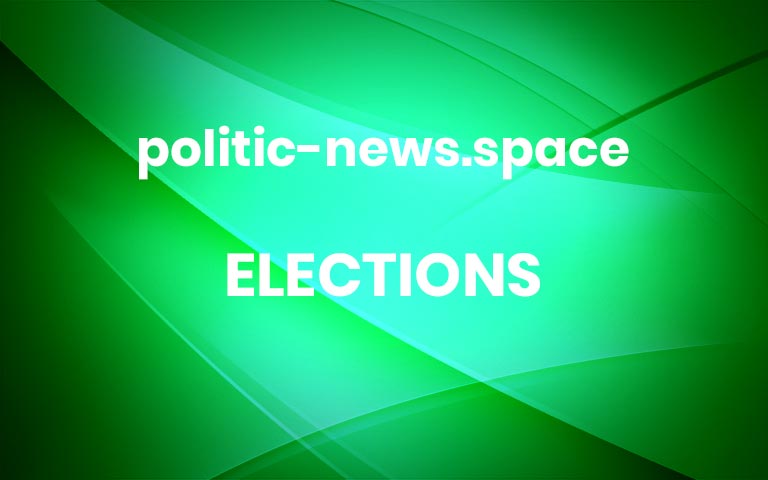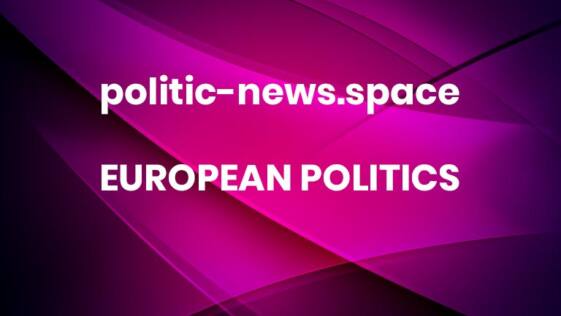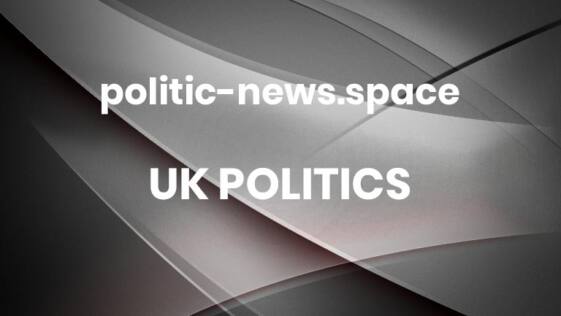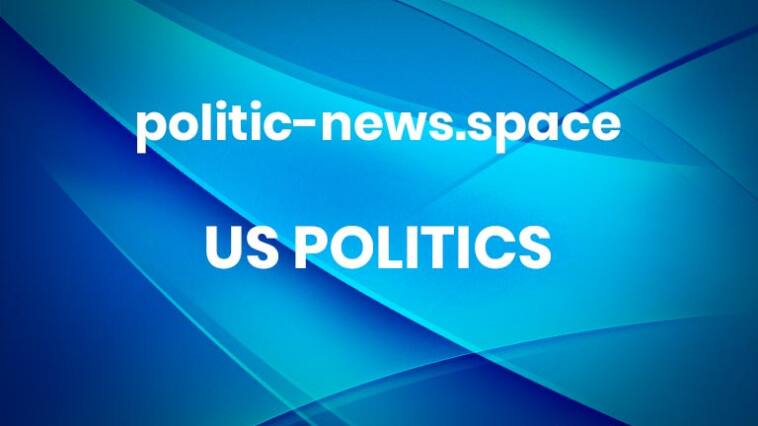HOTTEST

When you host one of the world’s last over-the-air radio shows in Yiddish, fans occasionally get in touch. But you hear more often from critics. They write to Avraham Zaks, the 37-year-old behind the mic of a weekly program called “We Are Here!” to nitpick about his grammar. Or to complain about his accent, which doesn’t sound sufficiently Eastern European to their ears. Some tell him the show needs more religious content.Mr. Zaks, who has flecks of gray in his beard and warm dark eyes and wears wire-rim glasses, does not mind. On some level, he is kind of tickled by the feedback.“I write and say: ‘Thank you very much, we’re doing our best. It’s nice to hear that you’re listening,’” he said on a Wednesday afternoon, just minutes before his show started. “The problem in broadcasting generally is that most of the time, you don’t get any reaction. You feel like you’re speaking to yourself.”“We Are Here!” is one of a handful of niche language radio offerings of Kan, Israel’s public media network, officially known as the Israeli Public Broadcasting Corporation.Avraham Zaks, the host of a weekly program called “We Are Here!” on Kan, Israel’s public media network.Avishag Shaar-Yashuv for The New York TimesMost of the company’s 1,000 employees run a highly regarded TV, radio and digital news division or oversee the production of some of the country’s most prestigious television shows, some of which air on U.S. streaming platforms. As Israel’s answer to the BBC or PBS, Kan, whose headquarters is in Jerusalem, is more interested in gravity than ratings.These days, Kan has a new focus: survival. It sits squarely in the cross hairs of Israel’s right-wing government elected in November. Through Shlomo Karhi, the minister of communications, the government has issued a number of threats against the network, starting with a vow to defund the company and shut it down.“There is no place in this day and age for a public broadcaster when there is a wide range of channels,” Mr. Karhi said during a news conference in January.In case anyone thought he was talking exclusively about saving taxpayer money — Kan receives the equivalent of $180 million a year from Israel’s coffers, about 85 percent of the company’s budget — he also accused the media more broadly of being “too biased toward the left.”A few weeks later, a spokesman for Mr. Karhi said in a statement that the closure of Kan was delayed “until further notice” so that the government could concentrate on overhauling the judiciary, a plan that has convulsed the nation.More recently, the minister said he wanted to strip Kan of three of its eight radio spectrums, which are needed for radio stations. The station broadcasting “We Are Here!” is expected to survive any cull because an Israeli regulation requires foreign language broadcasting in this nation of immigrants. The fear among Kan’s supporters is that once the government is done with the judiciary overhaul, whether its plans end with success or failure, the network is next.“If you’re looking for a textbook on how to turn a democracy into an autocracy, it includes shutting down independent media,” said Tehilla Shwartz Altshuler, a senior fellow at the Israel Democracy Institute, who drafted Kan’s journalistic code of ethics. The media market in Israel, a country of 10 million people, is small by American standards and highly competitive. There are four TV networks in total. The other three are privately held and Kan is generally in a tie for fourth place in the ratings race with Channel 14. That network, often called Israel’s version of Fox News, enthusiastically supports the Netanyahu administration. In recent months, according to the network, it has enjoyed a ratings surge.Political leaders in Israel, like those in virtually every country, try to influence and shape news coverage. But Prime Minister Benjamin Netanyahu seems especially eager to manage the media. Two of the three corruption trials against him involve quid pro quos for favorable coverage from powerful publishers — one the owner of a large daily newspaper and the other a telecom tycoon who operates a popular online news site. (Mr. Netanyahu denies wrongdoing.)“The coalition is not interested in the standard pushback game we’ve seen in the past,” said Shuki Tausig, chief editor of The Seventh Eye, a media watchdog publication. “They want to use regulations to weaken, or even smash, big commercial players that are not obeying them. And they want to eliminate or control Kan.”The network is the successor to the Israel Broadcasting Authority, which was closed in 2017 after critics from across the political spectrum concluded that its programming was shabby and the authority too easily buffeted by politicians, who appointed its board members and controlled its budget.Kan has been designed for imperviousness to partisanship, relatively speaking; the job of selecting board members is up to industry professionals. It’s a structure that has produced a catalog of highly compelling television, including a three-part documentary about Adolph Eichmann, “The Devil’s Confession,” available on Amazon Prime and bankrolled by a number of companies. Last month, Kan was nominated for 125 Ophir Awards, Israel’s version of the Oscars and Emmys, more than double its nearest rival.The media market in Israel, a country of 10 million people, is small by American standards and highly competitive. There are four TV networks in total. Avishag Shaar-Yashuv for The New York Times“All the other networks are trying to make a profit so they are filled with shows where people are on an island for three weeks fighting over a bag of rice,” said Tsuriel Rashi, senior lecturer at Ariel University’s School of Communication. The Eichmann documentary, he added, was “a huge undertaking.”“It’s expensive, and it won’t make money,” he said, “but it’s important.”Kan is in an office building in a generic patch in Jerusalem, not far from an ultra Orthodox neighborhood and near the Israel Tax Authority. During a recent visit, the place hummed with reporters readying an evening broadcast. In the Arab media room, a handful of employees were watching dozens of televisions broadcasting from around the Middle East.“Today is kind of quiet,” said a reporter with his eyes trained on the screens. “There was a machine gun fired into the air in Gaza, which set off sirens in Israel, but no rockets.”“I’ve seen scarier things in my professional life,” one of his colleagues said.Despite the business-as-usual vibe here, morale has sagged, as it would at any institution facing extinction.“We had a companywide meeting a few weeks ago, and I told everyone, ‘I know there are people here who go home at night and have children ask if they will have a job in the morning,’” Gil Omer, chairman of the Israeli Public Broadcasting Corporation, said in an interview at Kan’s offices. “And I told them that we will do everything we can to keep this place alive.”Gil Omer is the chairman of the Israeli Public Broadcasting Corporation, known as Kan and is Israel’s answer to the BBC or PBS.Avishag Shaar-Yashuv for The New York TimesFor now, the government appears to have scaled back its ambitions to those three radio spectrums, which it plans to make available to commercial networks.It’s not a measure Mr. Karhi could take unilaterally. Yoaz Hendel, his predecessor as minister of communications, said in an interview that Mr. Karhi did not seem to understand the job, which has nothing to do with Kan’s budget — that’s the finance ministry’s purview — and is all about building communications infrastructure, like 5G.“Karhi could announce tomorrow that all Israelis need to wear red hats, but that doesn’t mean anyone would listen to him,” Mr. Hendel said. “He should focus on what he was appointed to do, which is to make sure that Israel is well-connected.”Elad Malka, the vice director general at the Ministry of Communications, disagreed. “The minister in charge of public broadcasting is the minister of communications,” he said. “Of course, if there are changes that the minister wants, he needs to go to the Knesset,” Mr. Malka added, referring to Israel’s Parliament.Even if he lacks the authority to unplug Kan on his own, Mr. Karhi, a former member of the Knesset, has grabbed national attention in Israel because his statements appear to reflect the will of the government. And grabbing attention is one of Mr. Karhi’s specialties. In February, he denounced critics of the judicial overhaul plan as “erav rav,” an ancient term for demons who pose as Jews and must be killed. In early March, during the Jewish holiday of Purim, he tweeted a message wishing everyone well — except for reservists soldiers opposed to the judicial overhaul, who he said could “go to hell.”“He has no interest in media,” Mr. Tausig said. “His actions as minister are just political opportunism, a way to demonstrate he’s more extreme than extreme, to serve Netanyahu.”A spokesman for the Ministry of Communications declined to comment.Mr. Zaks, the host of “We Are Here!,” has closely followed the drama that has engulfed his employer, but one recent Wednesday afternoon he was more interested on his upcoming interview with the head of the Yiddish Department at Hebrew University.They discussed how to attract Israel’s ultra Orthodox to evenings of Yiddish theater and literature, a major challenge given that much of the canon is downright irreligious. Reaching the Haredi, or ultra Orthodox, community is important to Mr. Zaks, who was raised in a Lubavitcher community outside Tel Aviv. By the time he was 20, he realized that he was an atheist and left. He spent the next few years discovering popular culture that he had never encountered — television, movies, professional sports.“I knew about radio because it was on all day at home,” he said. “That was it.”The biggest group of Yiddish speakers in Israel are Haredi, but he assumes they are a tiny percent of the audience for “We Are Here!” because it’s a secular show. He knows, however, that every year a few thousand exit the ultra Orthodox community and he’s happy to offer them some connection to the world they have left behind.“It’s like being an émigré and reading a newspaper in the language you were raised in,” he said. “I don’t love the place that I left, but I love Yiddish. It’s a heritage that we have to keep.” More

La votación tuvo sorpresas, entre ellas que Sergio Massa, ministro de Economía, tuvo más votos. El candidato peronista se enfrentará a Javier Milei, un economista libertario, en el balotaje.Tras dos elecciones, la contienda presidencial argentina se dirige ahora a su ronda decisiva, en la que los dos candidatos más votados competirán por liderar un país en el que la gente está desesperada por un cambio de rumbo en la economía.Se trata de Javier Milei, economista libertario de extrema derecha y comentarista de televisión que ha aceptado de buena gana las comparaciones con Donald Trump, y Sergio Massa, ministro de Economía de Argentina, de centroizquierda, y el encargado de gestionar una economía con una inflación anual de casi el 140 por ciento.Milei fue el candidato más votado en las elecciones primarias, que se realizaron en agosto, y durante meses había liderado las encuestas, pero en la votación del domingo Massa fue el claro vencedor. Obtuvo casi el 37 por ciento de los votos, frente al 30 por ciento de Milei, resultados que los llevan a un balotaje el 19 de noviembre.Aquí presentamos cinco conclusiones de la votación del domingo y el camino que le queda a Argentina por recorrer.El domingo, Milei obtuvo el 30 por ciento de los votos.Sarah Pabst para The New York TimesMilei está en una posición más endeble de lo que se esperabaEl domingo, Milei partía como claro favorito, y algunos integrantes de su campaña predijeron que podría ganar las elecciones desde la primera vuelta.Sin embargo, esa noche obtuvo casi exactamente el mismo porcentaje de votos que en las elecciones primarias, y ahora se enfrenta a un contrincante, Massa, que parece mucho más fuerte de lo que se pensaba.Milei ha conseguido mucha atención por sus promesas de transformar de manera radical el gobierno y la economía argentinos con un plan para eliminar el banco central del país y sustituir su moneda por el dólar estadounidense.Pero los analistas afirmaron que su estilo político impetuoso, que le ha ganado comparaciones con Trump y Jair Bolsonaro, el expresidente derechista de Brasil, probablemente alejó a muchos votantes del centro político.“Los partidarios que hicieron memes de él con Bolsonaro y Trump no le hicieron un favor”, dijo Brian Winter, un analista de política latinoamericana quien también ha sido periodista en Argentina. “Los argentinos quieren un cambio con desesperación, pero no hay suficiente demanda para ese estilo de conservadurismo”.Massa obtuvo el mayor porcentaje de votos el domingo, pero carga con el peso inconveniente de ser ministro de Economía de una economía en crisis.Enrique Garcia Medina/EPA, vía ShutterstockMassa obtuvo el mayor porcentaje de votos desde la política tradicionalMassa tiene una experiencia de dos décadas en la política argentina y es el nuevo líder del movimiento peronista, el cual ha dominado la política en Argentina durante décadas y ha ganado nueve de las últimas 12 elecciones presidenciales libres y justas.Luego de que quedara en tercer lugar en las primarias, la poderosa maquinaria política peronista se desplegó con fuerza el domingo. La participación general aumentó desde agosto en ocho puntos porcentuales, a casi el 78 por ciento el domingo, y ese aumento pareció beneficiar en gran medida a los peronistas, ya que el apoyo al movimiento aumentó desde las primarias en más de nueve puntos porcentuales.“El peronismo se asustó y jugó mucho mas unificado”, dijo María Esperanza Casullo, politóloga de la Universidad Nacional de Río Negro, en Argentina. “Todo el mundo hizo lo posible para ganar estas elecciones, y en las provincias donde les había ido muy mal, repuntaron”.Massa también aprovechó su cargo como ministro de Economía e impulsó varias políticas para impulsar su candidatura, entre ellas, programas que devuelven el impuesto sobre las ventas a algunos trabajadores y eliminan el impuesto sobre la renta para otros.Buenos Aires, la capital. La inflación en Argentina roza el 140 por ciento.Sarah Pabst para The New York TimesLa gran perdedora de las elecciones podría ser la ya frágil economía argentinaEstas exenciones fiscales podrían ayudar a Massa a ganar las elecciones, pero son medidas cuestionables en un país que ya está en quiebra y atraviesa una de sus peores crisis económicas en años.La pobreza aumenta, la inflación se acerca al 140 por ciento y el valor del peso argentino se desploma. Este caos económico le ha dado a Milei una posibilidad a la presidencia, a pesar de su inexperiencia, pero algunos economistas temen que sus propuestas de políticas radicales, como la dolarización de la economía, perjudiquen aún más a una economía ya frágil.Sin embargo, Massa lleva más de un año al frente de la economía argentina, justo cuando la situación se ha deteriorado, y su plataforma no incluye planes para cambiar el rumbo de manera significativa. De hecho, ha prometido mantener algunas políticas económicas que los economistas conservadores critican, como las grandes subvenciones al gasto energético de los residentes.Aun así, Massa se ha mostrado en general más favorable al mercado que otros dirigentes peronistas, y como en las elecciones del domingo los peronistas obtuvieron el mayor número de escaños en el Congreso argentino (aunque aún están lejos de ser mayoría), tendrá mucha más capacidad para gobernar que Milei, dijo Martín Rapetti, economista argentino.¿Cómo gobernaría? “Acá entramos en terreno conjetural”, dijo Rapetti. “Massa no ha dicho nada concreto respecto a su programa económico”.La candidata que los mercados favorecían más —Patricia Bullrich, una exministra de Seguridad de derecha— quedó eliminada de la contienda el domingo.Patricia Bullrich quedó fuera de contienda el domingo, y sus partidarios podrían decidir el resultado de la segunda vuelta.Natacha Pisarenko/Associated PressLas próximas cuatro semanas serán una pelea por los votantes de BullrichAunque Bullrich está fuera de la contienda, aún podría decidir la presidencia.A pesar de quedar en tercer lugar, Bullrich obtuvo el 24 por ciento de los votos, y la gran pregunta de la elección es hacia dónde se inclinarán sus 6,2 millones de votantes.Se cree que Milei, como conservador, tiene una ventaja entre esos votantes, y en su discurso del domingo por la noche criticó a los peronistas. Es poco probable que muchos de sus partidarios, tras años de políticas peronistas fracasadas, apoyen a Massa.Sin embargo, muchos otros partidarios de Bullrich son centristas y, para ellos, Milei podría resultar demasiado extremista.La contienda sigue estando abiertaAunque Massa ganó el domingo, su victoria no está para nada garantizada en la segunda vuelta.Existe un sentimiento antiperonista muy extendido en Argentina tras años de escándalos de corrupción y crisis económicas, y Massa tiene además la limitante de haber sido ministro de Economía en una economía en problemas.“Los países no suelen elegir ministros de Economía que están al mando durante una inflación del 140 por ciento”, dijo Winter. “Pero tampoco suelen elegir a personas como Javier Milei”.Milei parece haber llegado a un límite de votantes que realmente quieren que sea presidente. Ahora debe convencer a la mayoría de los electores indecisos para que opten por su visión de un cambio drástico para un país que lleva mucho tiempo resistiéndose al cambio.Ambos candidatos apelaron a la moderación en sus discursos del domingo por la noche e intentarán abrir sus puertas a los partidos políticos que quedaron eliminados de el balotaje. Queda mucha campaña por delante.Lucía Cholakian Herrera More

A problem with Microsoft’s Azure system also hit check-in and booking systems at Allegiant and Sun Country Airlines.Frontier Airlines briefly grounded all flights on Thursday amid a major outage in Microsoft networks, which also knocked out some computer systems at low-cost carriers Allegiant Air and Sun Country Airlines.Microsoft said on the status page for Azure, its flagship cloud computing platform, that the problem began at 5:56 p.m. and affected multiple systems for customers in the central United States.“Our systems are currently impacted by a Microsoft outage, which is also affecting other companies. During this time booking, check-in, access to your boarding pass, and some flights may be impacted,” Frontier said in a post on X.The airline issued a ground stop for all its flights, according to a notice posted on the Federal Aviation Administration’s website. The ground stop was lifted about 35 minutes later.Airlines sometimes issue these orders to temporarily halt flights because of technical issues.Frontier did not specify how many flights and passengers have been affected so far. The Denver-based airline operates a fleet of more than 100 planes, according to its website.The Microsoft outage hit at least two other airlines.“One of our information vendors is experiencing a global outage affecting multiple airlines. As a result, some of our services are temporarily unavailable,” Sun Country said.Allegiant said on X that customers may face problems with check-ins, bookings and issuing boarding passes. More

Ms. Truss, who prevailed over Rishi Sunak, will be greeted by an array of vexing problems, including double-digit inflation, a looming recession, labor unrest and soaring household energy bills. LONDON — A divided British Conservative Party announced on Monday that it had chosen Liz Truss to replace Prime Minister Boris Johnson, turning to a party stalwart, hawkish diplomat and free-market champion to lead a country facing the gravest economic crisis in a generation.Ms. Truss, 47, defeated Rishi Sunak, a former chancellor of the Exchequer, whose resignation in July set in motion Mr. Johnson’s ouster. Her victory was widely expected, but the margin was less resounding than the polls forecast, suggesting she may face problems pulling together a party shaken by Mr. Johnson’s turbulent three-year tenure and a country rattled by an energy crisis and the aftershocks of Brexit.Ms. Truss, who served as foreign secretary in Mr. Johnson’s cabinet and was not part of the Tory rebellion that led to his departure, will formally assume the prime minister’s title on Tuesday in a meeting with Queen Elizabeth II at Balmoral Castle in Scotland, where the queen spends her summer holiday. Ms. Truss will be Britain’s fourth prime minister in the six years since it voted to leave the European Union, and only its third female leader, after Margaret Thatcher and Theresa May. Like them, she will be greeted by a forbidding array of problems.Double-digit inflation, a looming recession, labor unrest, soaring household energy bills and possible fuel shortages this winter — all will confront Ms. Truss as she moves into 10 Downing Street. She also faces a potential collision with the European Union over her legislation to change trade rules in Northern Ireland, a dispute that could spill over into Britain’s relations with the United States, which opposes any kind of disruptive change.In a brief, businesslike speech to members of her party after her victory was confirmed, Ms. Truss promised a “bold plan” to lower taxes and revive the economy. “I campaigned as a Conservative, and I will govern as a Conservative,” she declared. “We will deliver, we will deliver and we will deliver.”Ms. Truss after her victory was confirmed.Adrian Dennis/Agence France-Presse — Getty ImagesCritics said Ms. Truss’s call for tax cuts and smaller government was inadequate in the face of the dire economic threats bearing down on Britain. Many expect her to pivot quickly and announce a massive aid program, as soon as this week, to shield vulnerable households from skyrocketing gas and electric bills, a collateral effect of Russia’s cutoff of energy supplies to continental Europe.“The wonderland nature of the campaign has not prepared people for what’s to come,” said Gavin Barwell, who served as chief of staff to Mrs. May. “If you look at the overall environment, you’ve got quite a difficult set of issues, and the party is in a worse state than when May came in.”On the global stage, Ms. Truss is likely to intensify Britain’s support for Ukraine and its president, Volodymyr Zelensky. As foreign secretary, she staked out a tough position on Russia, declaring that “Putin must lose” his war on Ukraine.The Fall of Boris Johnson, ExplainedCard 1 of 5The Fall of Boris Johnson, ExplainedTurmoil at Downing Street. More

Lt. Gov. John Fetterman of Pennsylvania, the Democratic Senate nominee who has been off the campaign trail for more than two months after having a stroke in mid-May, told his hometown newspaper this week that he hopes to return to in-person campaigning “very soon” even as he acknowledged some persisting health effects.“I would never be in this if we were not absolutely, 100 percent able to run fully and to win — and we believe that we are,” Mr. Fetterman told The Pittsburgh Post-Gazette on Wednesday, his first interview since falling ill.Mr. Fetterman had a stroke days before the Democratic primary in May and had a pacemaker and defibrillator implanted on the day of the primary. At the time, his campaign described the move as a standard procedure that would address “the underlying cause of his stroke, atrial fibrillation.” In early June, his campaign acknowledged that he also had a heart condition called cardiomyopathy, which can lead to heart failure, and his doctor said he had appeared to have left other heart issues untreated for years.Mr. Fetterman said he “almost died” and vowed to focus on his recovery before returning to the trail.Since then, his campaign has kept up an aggressive and attention-grabbing social media and television presence, painting his Republican opponent, Mehmet Oz, as more at home in New Jersey than Pennsylvania. But the public has seen little from Mr. Fetterman, save for the occasional brief video.In the Post-Gazette interview, which was conducted by video — and Mr. Fetterman used closed captioning to ensure he did not miss words, the paper said — the candidate said he was walking four to five miles a day, participating in campaign strategy sessions and is now increasingly attending fund-raisers, with several scheduled for this week. He greeted volunteers in person recently, and he also said he was working with a speech therapist.“I might miss a word every now and then in a conversation, or I might slur two words. Even then, I think that’s infrequent,” Mr. Fetterman told the paper. “So I feel like we are ready to run.”He stressed that “physically, I have no limits,” though he also acknowledged that “my hearing is still a little bit not perfect.”Several people who attended a virtual fund-raiser with Mr. Fetterman recently said they were encouraged to see that he seemed to be improving, but also said that he did not sound quite like he did before the stroke — as Mr. Fetterman has implicitly acknowledged.“We saw a candidate whom we all support but who was still recovering,” said Phyllis Snyder, a board member of J Street, the liberal Israel-focused organization. J Street Pennsylvania and the organization’s political arm were listed as hosting the fund-raiser. “We hope that that will continue. But he was very engaged.”She added that Mr. Fetterman typically “speaks what’s on his mind. I’d say he was just a little more measured and careful.”Other attendees said it was occasionally evident when he was reaching for a word.“I don’t think he’s totally back yet,” said Ed Feinstein, a lawyer in Pittsburgh who also attended the event. “But he was animated, and he answered questions.”“He seemed to have energy,” he added, “which I’d been worried about.”Indeed, plenty of Pennsylvania Democrats have privately been anxious about when Mr. Fetterman will return to making public appearances. He has led a number of public polls over Dr. Oz, who faces challenges with his own base. But Pennsylvania is a highly competitive state, and may represent Democrats’ best chance to pick up a seat.Given the stakes of the election and the intense nature of running a statewide contest, Mr. Feinstein said that “I came away encouraged. But I’m still concerned.”“A lot of his appeal is when you see him,” he continued. “He needs to get out there and talk to people in small and larger groups. And that’s grueling, there’s no question about it.”In a statement, Mr. Fetterman’s spokesman, Joe Calvello, said Mr. Fetterman was “doing incredibly well for a guy who had a stroke two months ago and is well on his way to a full recovery.”Noting Mr. Fetterman’s own assessment of his health, he continued, “he will occasionally miss a word or slur a word now and then. This is all part of the recovery process.”And certainly, he is not the first politician to suffer a stroke or heart problems. Former Vice President Dick Cheney had a defibrillator implanted in 2001. He finished two terms in the White House, including a re-election battle in 2004.In a sign of accelerating activity, Mr. Fetterman is set to attend three in-person fund-raisers in Philadelphia on Thursday, Mr. Calvello confirmed. More






